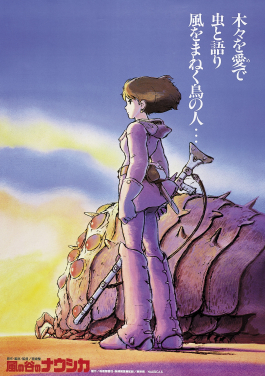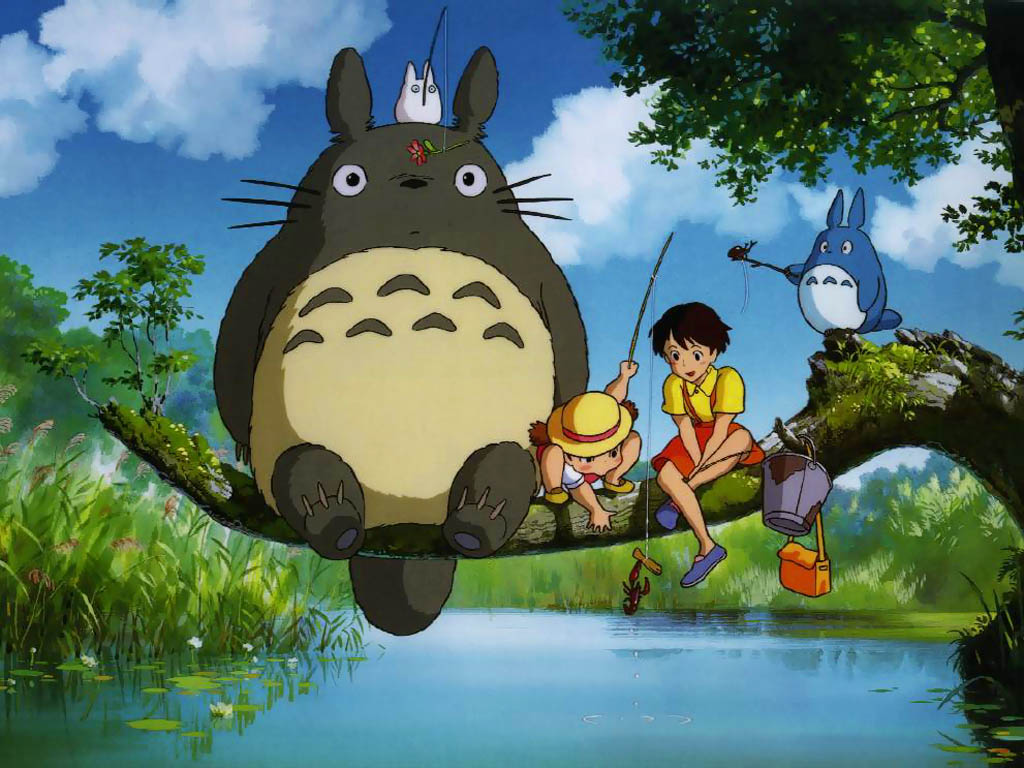
In the distant future, Earth has been destroyed by nuclear war and humanity survives in small kingdoms, which are constantly under threat by dangerous animals, and an encroaching toxic jungle. One kingdom, the Valley of Wind, has a princess named Nausicaä who tries to understand, rather than destroy the Toxic Jungle. Meanwhile, the rival kingdom of Tolmekia plans to deal with the threatening flora and fauna by destroy their home, the Sea of Decay by resurrecting one of the Great Warriors that started the holocaust. Nausicaä is taken prisoner by the Tolmekians, but escapes under the Sea of Decay where she discovers the plants are toxic because they act as a filtration system drawing in radiation and purifying the world. It’s up to Nausicaä to prevent another holocaust.
Released in the early 1980s, this Studio Ghibli anime is a little less distinctively Miyazaki, and more like in keeping with other Toho sci-fi films - nuclear holocaust, giant monsters, the wrath of nature, etc. – it’s no coincidence that the creatures that threaten mankind are called ‘Ohms’ (Ohm is a universally recognized symbol of divine power throughout east Asia) - however, a number of trademark Miyazaki motifs are starting to emerge, most notably, his love of flying machines.
In the quarter century since Nausicaä of the Valley of the Wind was released anime has gotten more complex, with computer effects and more extreme ‘camera angles’, but that doesn’t really take anything away from this movie, which may not be as wowing, but still has damn good animation which must have seemed unbelievably ground-breaking at the time.
Normally with these anime titles I try to recommend whether it should be viewed in subtitled or dubbed mode. This is particularly challenging when it comes to Nausicaä of the Valley of the Wind. In it’s initial U.S. release, as Warriors of the Wind, it was so badly cut and redubbed that Miyazaki sent a katana with a two word note, “no cuts” to Harvey Weinstein at Disney when they were contemplating cutting another Studio Ghibli film, Princess Mononoke. But, Nausicaä of the Valley of the Wind is a bit difficult for non-Japanese audiences, and it’s easy to see why literal translation isn’t always desirable. So when Disney re-released Nausicaä, they did release it uncut, but there are definite differences between the subtitled and dubbed versions. To fully grasp all the subtleties of the story, I actually recommend viewing it with both the English dubbing and the English subtitles on simultaneously. If you must decide between one or the other, pick whichever you prefer, you will probably gain and lose an equal amount either way.





